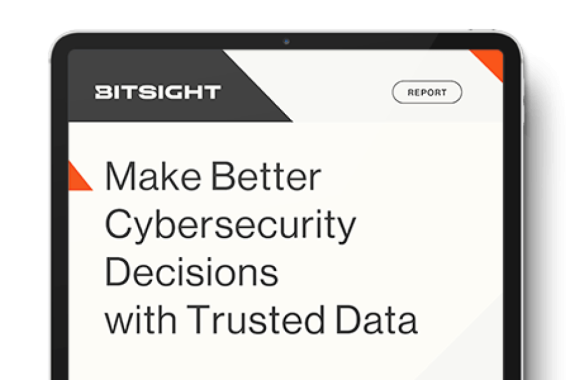The Marsh McLennan Cyber Risk Analytics Center Finds Correlation Between Bitsight Analytics & Cybersecurity Incidents
How to Get the Most Out of Cybersecurity Quantitative Risk Assessments

Quantitative risk assessments in cybersecurity help organizations understand the probability of risk. Assessments draw on data and cybersecurity analytics – which are presented as numerical or monetary output – and give board members and C-suite stakeholders a reliable way to understand the impact that risk could have on the business and inform resource investment.
Quantitative risk assessments can answer questions such as:
- How does our cybersecurity performance compare today to previous weeks, months, and years?
- Where are the areas of highest risk in our digital environment?
- How effective are our risk management decisions, processes, and controls?
- What’s at stake financially should a breach occur?
Getting reliable, trusted answers to these questions can help everyone in the organization focus on the most significant issues and mitigate cyber risk.
Let’s look at three essential components of any quantitative risk assessment.
1. Trusted, reliable data
To achieve a reliable and high quality risk assessment, you must draw on data you can trust. Your SIEM is a good place to start, but the data presented is often overly technical and doesn’t provide a complete view of risk.
Bitsight Security Ratings can help. A security rating is a powerful metric for describing overall cybersecurity performance based on externally observable data from trustworthy resources. Bitsight collects publicly-disclosed data from 120+ sources across a variety of risk vectors – including the common ones that hackers target, such as unpatched systems, misconfigured software, open access ports, and risky user behavior.
A Bitsight Security Rating is presented as a score ranging from 250 to 900. The lower the number, the more improvements you need. The higher the number, the better you’re doing, and the less financial and reputational risk the company is likely to endure in the event of a breach.
In fact, according to a Marsh McLennan Cyber Risk Analytics Center study, cybersecurity performance as measured by Bitsight is statistically significant and correlated with the likelihood of cybersecurity incidents. For example, Bitsight’s Patching Cadence risk vector, which measures the rate at which organizations remediate important vulnerabilities, was most strongly correlated to cybersecurity incidents, followed by risk vectors that measure updated desktop and mobile software and observed exploited devices.
Read more about our commitment to delivering trusted security ratings.
2. The ability to quickly run scenarios
Scenario-based quantitative risk assessments ask “what if” type questions about cybersecurity and quantify the potential outcome if a scenario is realized in financial terms.
For example, if your organization is the victim of a ransomware attack, these assessments help you understand the impact on your bottom line. Scenarios consider the immediate financial cost – such as paying the ransom or remediating the hack – as well as broader impacts such as regulatory fines and penalties and lost productivity and reputation.
However, traditional methods of collecting the needed data and modeling various scenarios requires substantial resources and expertise. And this process isn’t easily repeatable.
But with Bitsight Financial Quantification, you can quickly run scenarios that simulate a range of potential financial losses across thousands of cyber events – without investing in any additional headcount or resources.
With Bitsight, you can model the financial impact of:
- Ransomware, denial of service, data theft, extortion, privacy breaches, and other types of attacks.
- Cyber incidents in your supply chain.
- A failure to meet cybersecurity standards and regulations and likely penalties and fees.
You can also run a financial quantification on your primary enterprise, or drill down into the quantification of your business units and/or subsidiaries.
Unlike traditional cyber risk quantification (CRQ) approaches that require vast resources (such as budget, people, knowledge, data) and often do not produce timely results, Bitsight delivers a modern approach that is quick, efficient, and repeatable.
3. Easily present findings
Because less technically astute stakeholders on the board and in the C-suite are taking on a greater role in cybersecurity oversight, you need to provide metrics that are straightforward, trusted, and easy for everyone to understand.
Using Bitsight, you can easily communicate cyber risk findings because we take the technical aspects of cybersecurity and reframe them as business risk.
For example, you can quickly pull digestible metrics that give your executives what they want – a data-informed picture of cyber risk and potential financial exposure. Armed with these insights, you can:
- Prioritize risk areas and inform cybersecurity investments using financial outcomes to justify decisions and create more understanding of cyber risk across the board.
- Calibrate cyber insurance.
- Measure the ROI of your investments over time.
- Monitor how your security rating and financial exposure improves.
Learn more about the benefits of quantitative risk assessments, how to prepare one, and how Bitsight can help identify, quantify, and reduce cyber risk.



